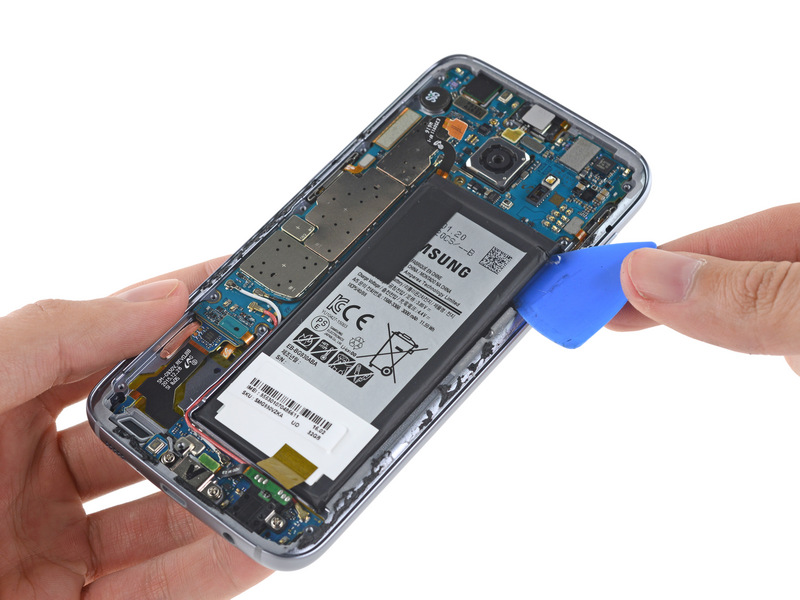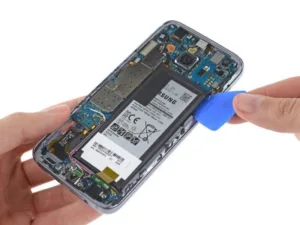For once, us high-end Samsung owners have a reason not to feel quite so smug, for even the biggest Samsung fans are now having to admit that the launch of the Galaxy Note 7 has been nothing short of a disaster.

The 2.5 million first generation Note 7’s have all been recalled, and now however many second gen handsets they managed to get out are all coming back too, and given that each takes around 500 pounds of raw material to produce, that’s an awful lot of wasted material – even if Samsung doubles up on its efforts to take them back and recycle them itself.
But it really begs the question of why manufacturers have increasingly been hard wiring batteries into their handsets? Obviously there seems to be some cachet left in being able to claim the thinnest smartphone or phablet, but do consumers really care about what is now amounting to shaving fractions of millimeters? Weight may be more important in the form factor battle, but even there, the added value is questionable as consumers (or at least reviewers) find handsets that are too light feel cheaply made. So, as we reach the limits of what is possible, there are really only bragging rights left here, anyway. Maybe cost is a factor, but again this seems unlikely at the high end of a market where their main competitor wants consumers to think higher cost means better quality.
Does Battery Failure Drive Upgrades?
Now only a cynic would suggest that manufacturers are seeing baked in batteries as the best way to ensure consumers continue to upgrade reasonably frequently whilst still being able to claim that the rest of the device is built to last, because they’ve come to accept that batteries barely last a day now, but any more and we’ll be back to landlines. Yes, if you want a more powerful handset that can endure some heavy use and you don’t practice good battery hygiene (and how many of us actually bother?) you’re going to have to accept a drop off in battery life. However, until recently, that just meant ordering a replacement.
 The S7 battery. Image: iFixit
The S7 battery. Image: iFixit
As it happens my shiny S7 Edge bricked a few weeks ago, in the same way the Note has been going, although fortunately not explosively. It started getting hot for short periods and within about 24 hours it got hot enough for long enough to fry the electronics, so off it went for a replacement and I had to go a week without playing Pokemon.
However, I still have my old S4 lying round as a backup, and what surprised me was how little I missed about the S7. Were it not for the vast amount of Samsung bloatware that it had irreversibly accumulated over its long life I could’ve installed most of my newer software on it, which left only two things I genuinely missed – the always-on screen and the geo-fencing. The first might sound odd coming from an eco-warrior but my watch broke around about the same time I got the S7 and I haven’t replaced it, so my phone has finally become my main means of checking the time, and the second is presumably easy enough to add via a software update or third party app. And the thing is, the reason I still had it in the cupboard was it was still going strong when the S7 came out, but I had replaced the battery.
And one more thing, for anyone who wants to argue that hard wired batteries are still replaceable with the right tools, so not all returned handsets go to the grinders, there’s still the carbon cost of the extra transport to annoy environmentalists. There is also the inconvenience factor to annoy consumers, and if you’re a manufacturer you might not want them reminded that they were happy enough with one of your old models.
Let’s hope that the tide turns on this. When the S6 launched the lack of a replaceable battery was one of the three main criticisms levelled at it by reviewers, the other two being the loss of waterproofing and the loss of the SD card slot. With the S7, Samsung back-tracked on those two, and the one good thing that might yet come of this disaster is that it back-tracks on replaceable batteries too. – Keith Baker
(My S7 got very hot again recently and the battery life seems to have dropped off (I have a standard plastic / leather case and was on a train where it was struggling to connect to 4G, either of which may be a factor). Hope this isn’t a sign of another trip back to Vodafone but it was definitely the battery overheating!
Keith J. Baker is a Researcher at the Centre for Energy and the Built Environment, Glasgow Caledonian University. He is a 2003 graduate of the DisplayMasters programme and has a PhD in Domestic Energy Consumption from the Institute of Energy and Sustainable Development, De Montfort University, Leicester, England, with a background in environmental science and science policy. He has a keen interest in the energy efficiency and environmental impact of new technology, particularly relating to displays.
http://www.linkedin.com/in/keithjbaker
This article first appeared in The Display Standard
Analyst Comment
Of course, the idea of planned obsolescence is not the only reason for fixed batteries. Having a changeable battery takes a little extra space and means a detachable portion of the case. Given the trend to waterproof handsets, a removable cover is also a challenge. I must say that while I mainly love my new Thinkpad T460S, the short battery life and lack of a replaceable battery (I have upgraded my last several Thinkpads to use high capacity batteries as well as having a spare) has been very frustrating. (BR)

